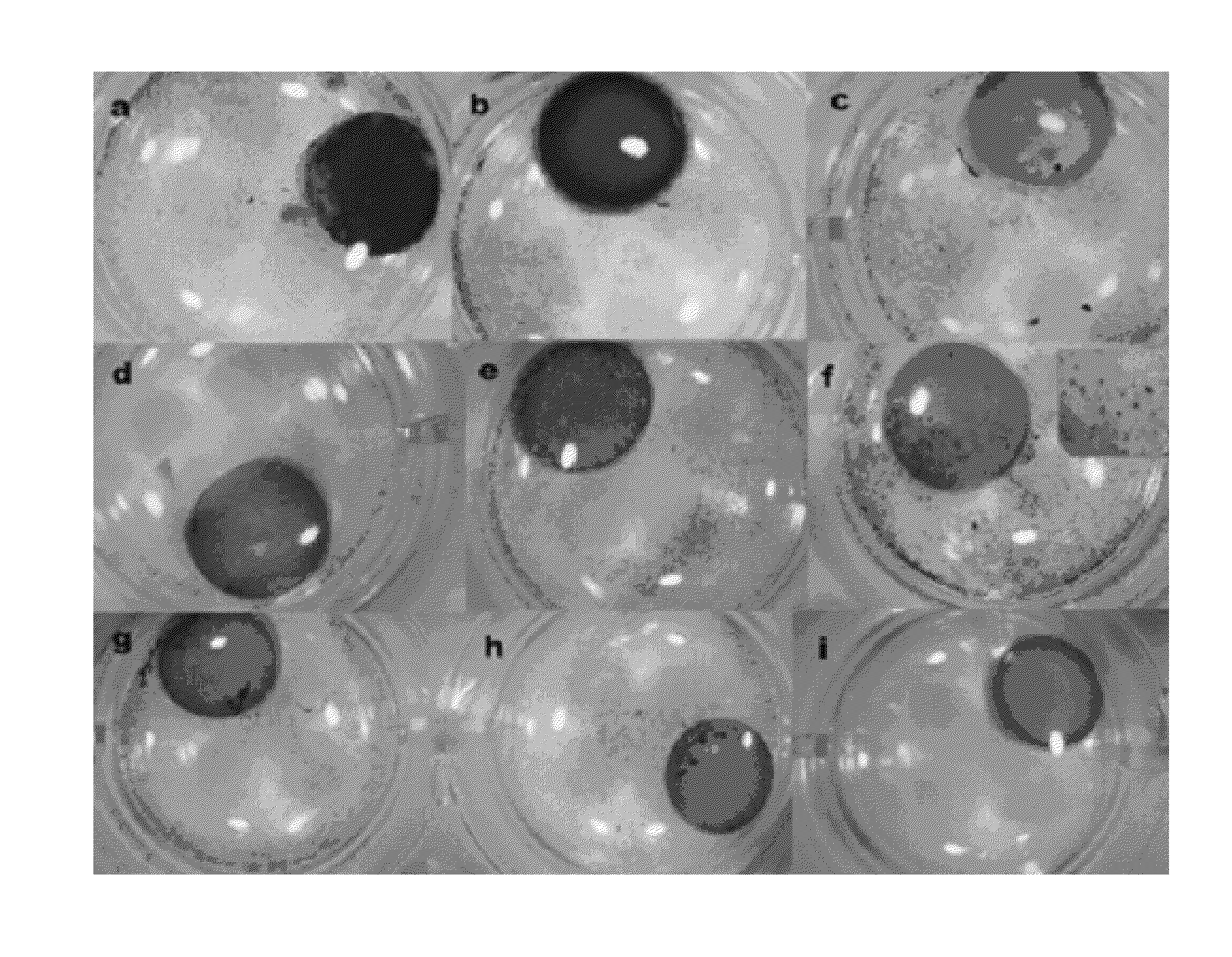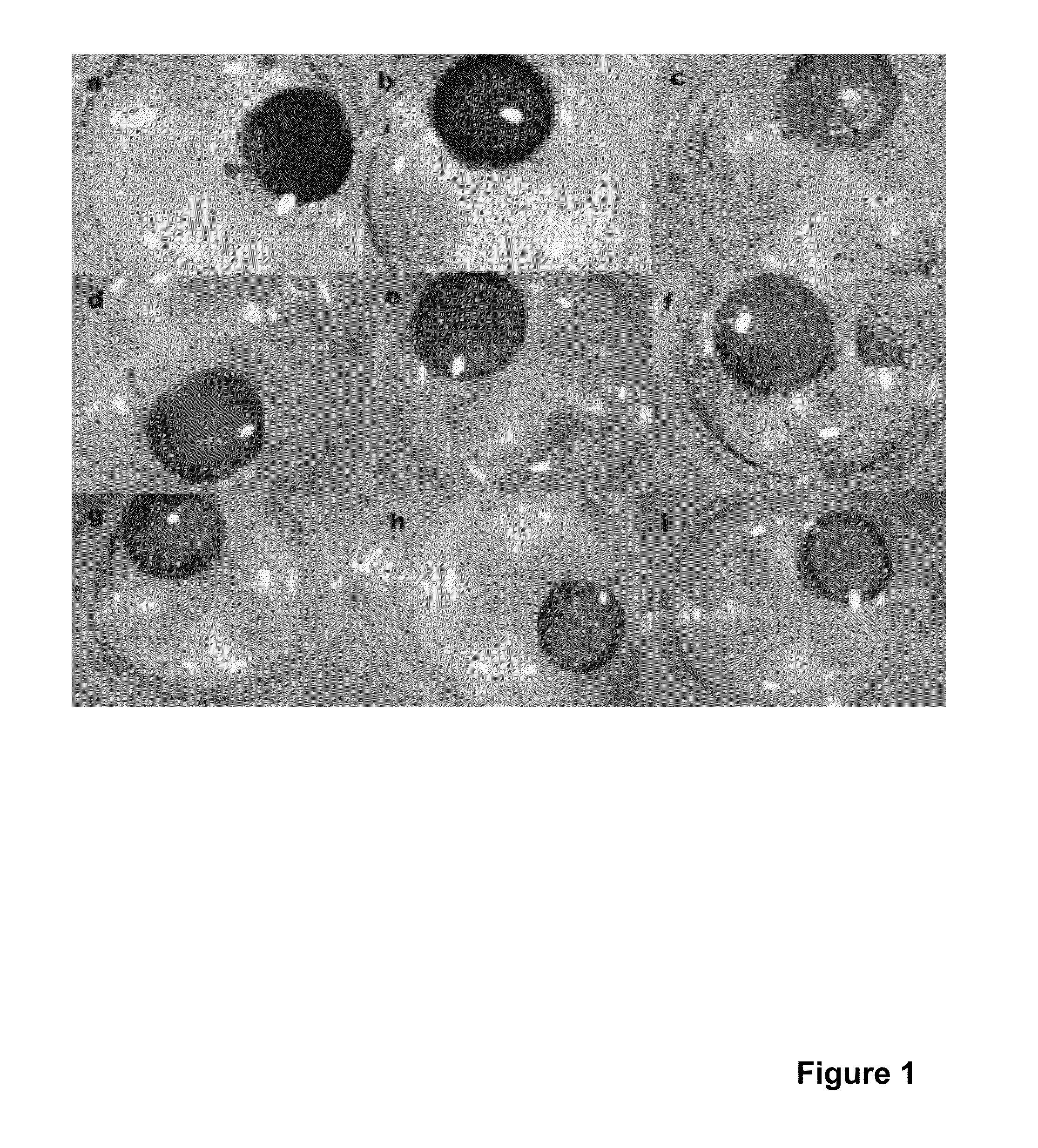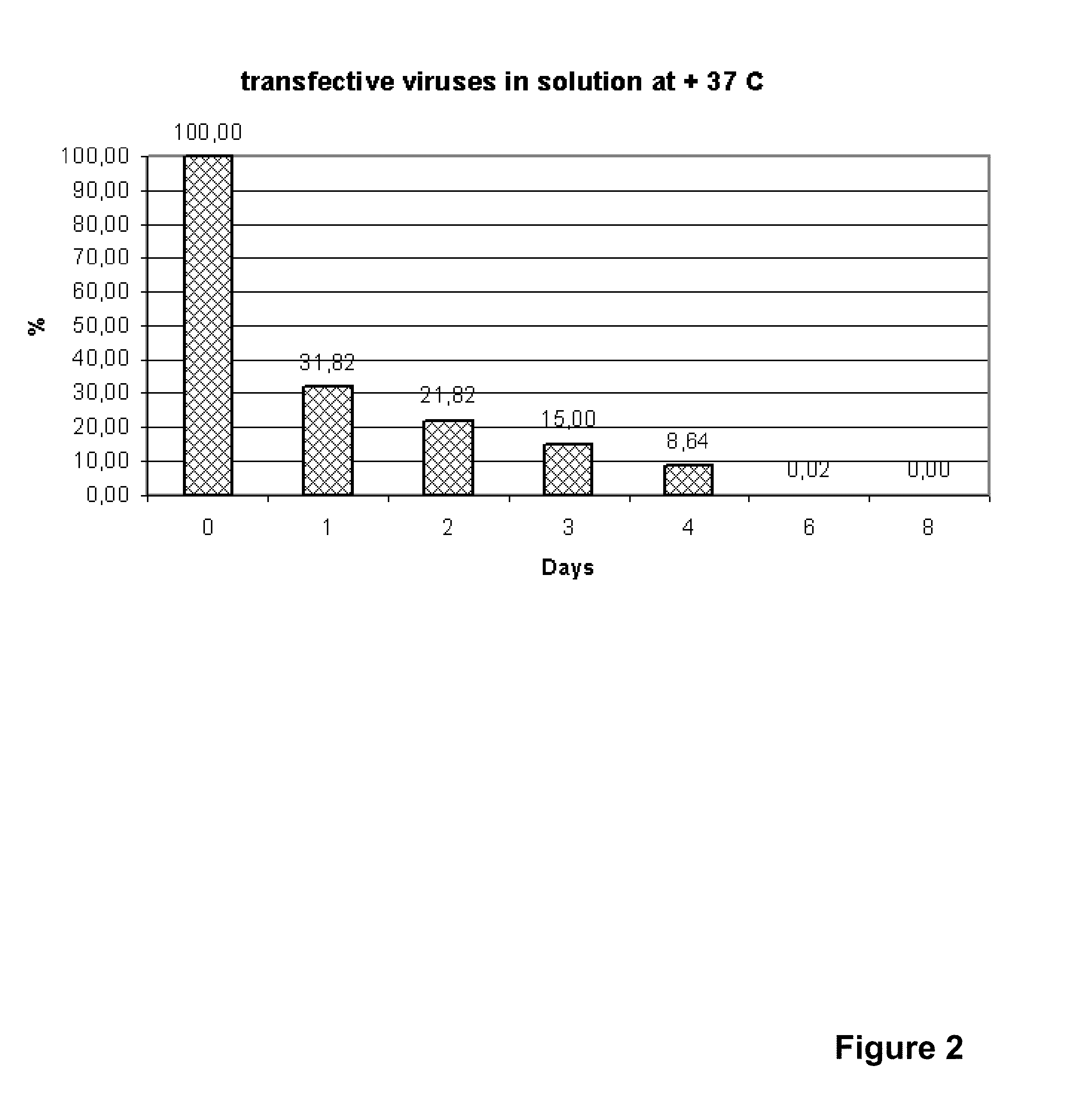Method for storing silica-based material, package produced with the method and use of package for packaging of silica-based products
a technology of silica-based products and packaging methods, which is applied in the field of storage methods of silica-based materials, package production methods and packaging methods for silica-based products, and can solve the problems of brittle surface structure formation, high stress through capillary forces, and silica formulations that crack when dried and then replaced in water
- Summary
- Abstract
- Description
- Claims
- Application Information
AI Technical Summary
Problems solved by technology
Method used
Image
Examples
example 1
[0071]Recombinant adenoviruses (serotype 5) with an E. coli LacZ marker gene are encapsulated in silica during the sol-gel process. The biodegradable (dissolvable) silica samples are then soaked into an aqueous solution, in phosphate buffered saline, PBS at +37° C. and pH 7.4 for different times. Due to low water-solubility of silica, the buffer is quickly saturated with respect to the silica's dissolution products and the degradation of silica stops.
[0072]At different time points the silica samples have been cultured with human skin fibroblasts and cells have been X-Gal stained. After staining it can be noticed (microscopically) from the desired colour that the marker gene LacZ has been transferred into the cells, which occurs if the cells have been infected by the viruses. This shows that adenoviruses are still biologically active and capable of transferring genes into the cells after 28 days' storage in PBS at +37° C. and pH 7.4 that is saturated with respect to the silica's diss...
example 2
[0075]Recombinant adenoviruses (serotype 5) with an E. coli LacZ marker gene are encapsulated in silica during the sol-gel process. The silica samples are kept in a ready-saturated aqueous solution (with respect to silica's dissolution products) 0.05 M TRIS (Tris-chloride, e.g., Trizma preset Crystals, Sigma) buffer at +2.2° C. (pH 7.0-8.0) for 229 days. Prior to the cell culture, the silica samples are let to dissolve in greater dissolution medium volume (in phosphate buffered saline, PBS at +37° C. and pH 7.4) for 3 days during which 10-30% of silica is dissolved. This is done in order to determine whether the adenoviruses encapsulated deeper in the bulk of silica are also active. After 3 days in PBS the silica samples are transferred to a culture of human skin fibroblasts. After X-Gal staining it can be noticed (microscopically) from the desired colour that the marker gene LacZ has been transferred into the cells, which occurs if the cells have been infected by the viruses. This ...
example 3
[0077]Sol-gel derived silica fibres are made into three dimensional structures by letting the just-made, still partly wet fibres, or separately in aqueous solutions partly dissolved and wet fibres to gather freely on top of each other in layers. The net-like structure of fibres having fibre-fibre contacts retains its flexibility as long as the structure is wet. If the structure is let to dry, the net-like structure becomes brittle loosing its flexibility. By placing the sol-gel derived silica fibre in net-like structures in an aqueous solution that is rather quickly saturated (by matching the volume and the typical solubility of silica at neutral conditions at 130-150 ppm) with respect to the silica's dissolution product, the degradation (dissolution) of silica stops facilitating the preservation of the structure.
PUM
| Property | Measurement | Unit |
|---|---|---|
| temperatures | aaaaa | aaaaa |
| temperature | aaaaa | aaaaa |
| pore sizes | aaaaa | aaaaa |
Abstract
Description
Claims
Application Information
 Login to View More
Login to View More - R&D
- Intellectual Property
- Life Sciences
- Materials
- Tech Scout
- Unparalleled Data Quality
- Higher Quality Content
- 60% Fewer Hallucinations
Browse by: Latest US Patents, China's latest patents, Technical Efficacy Thesaurus, Application Domain, Technology Topic, Popular Technical Reports.
© 2025 PatSnap. All rights reserved.Legal|Privacy policy|Modern Slavery Act Transparency Statement|Sitemap|About US| Contact US: help@patsnap.com



